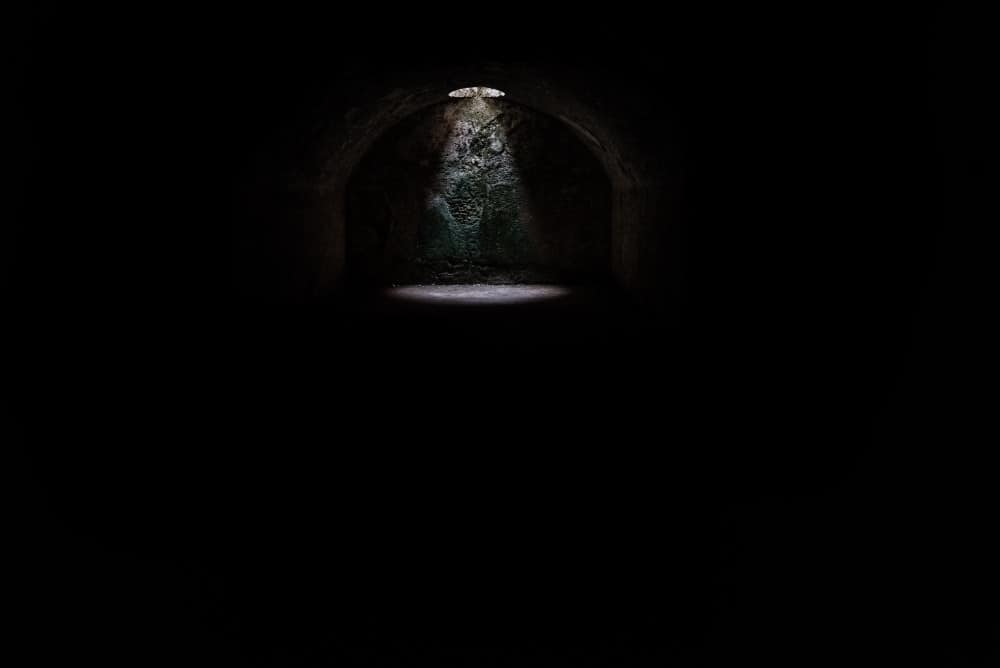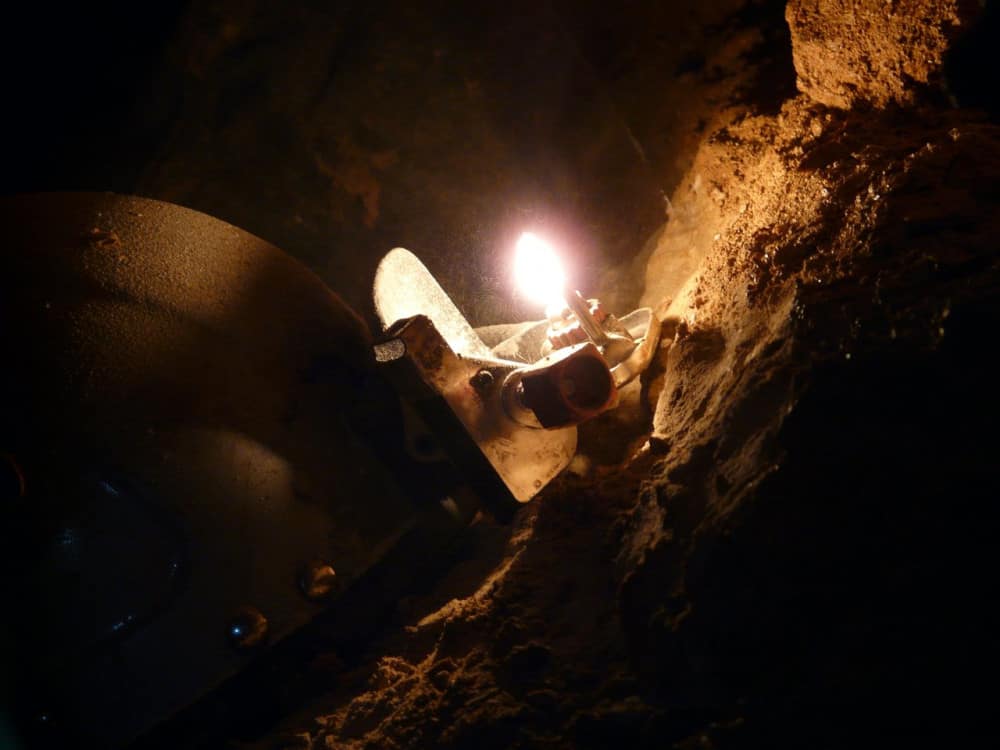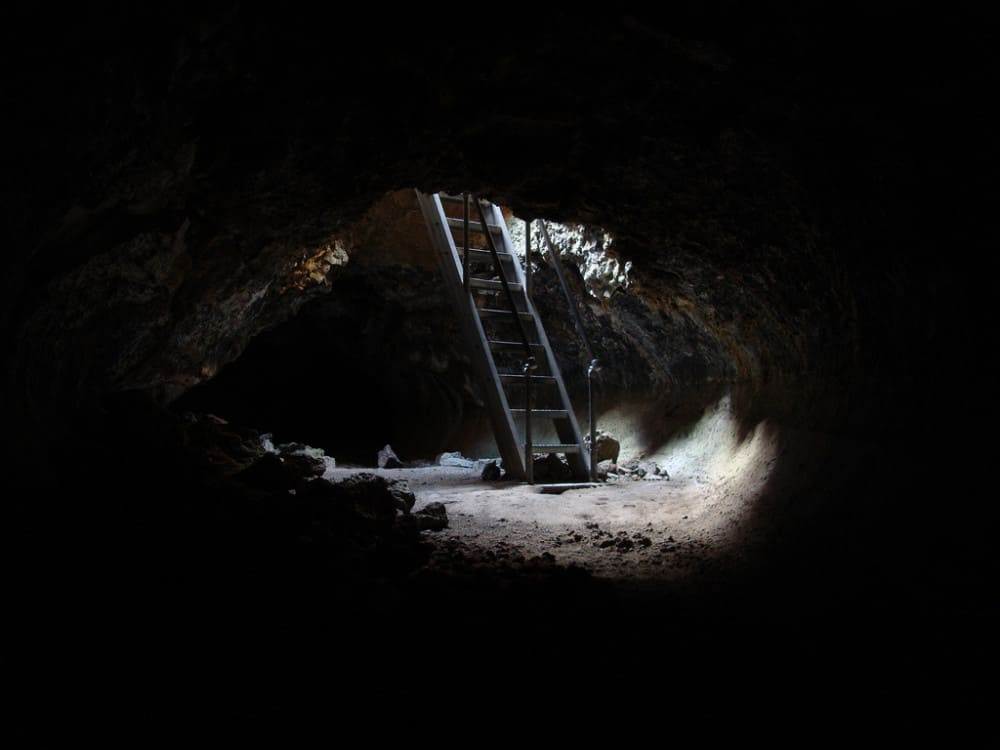I’ve never gotten lost, fortunately, but many have, and they have a lot of tricks to get out and stay safe. Want to find out how to do it? You’re in the right place. The short version:
So how to escape a cave? Ration your food, water, and light. Visualize your way into the cave with the greatest attention to detail. Only then, start moving slowly and deliberately. Always start with exploring larger passages. Look for human trails, upward slopes, and bats. Warmer temperatures and less humidity are generally better.
No worries, chances are you’ll come out alive, but you need to be deliberate about your next few steps.
What to Do When You Get Lost?
Every time I enter a cave, I get this distinct feeling of discomfort: the fear of getting stuck inside a cave and not making it out. It’s an irrational fear. First of: rarely ever do people die of getting lost in a cave. In the UK, about 20 people at most died from Hypothermia and other causes over the last 100 years. That’s good to know. So if you are prone to panic: enjoy it! You will eventually get yourself out of there.
The feeling is said to be one of a kind. Survival mode kicks in, giving you an adrenaline high and super focus. Don’t do any foolish things and there’s a good chance you live to tell the tale.
Before you start moving: do an inventory and make a plan
Now, first take an inventory of what you have and what you’ll need.
What do I have? Do you have rope, tape, etc? Good, this will be useful for marking routes you’ve checked.
What will I need? Ration your food, water, and light immediately. Spread it out as thinly as possible, as you don’t know how long you’ll be there.
Switch to your backup flashlight, and save your brightest light for when you might need it the most (ie. for supplying heat, for signaling, etc.)
Recount your steps in the greatest detail. Sit down and take your time to visualize you entering the cave, and every step leading up to where you are now. This is your best guess so take your time for this one.
Start moving – find hints to the way out
Move slowly and deliberately: this helps to avoid injury and helps you to keep focused. It’s 3 times more likely you’ll die from drowning or falling, so take it easy. Don’t panic, as this will cloud your judgment and increase the energy you use, which isn’t good.
Stop often and switch off your headlight. No need for light while you’re thinking. Also, this helps you to search for any light coming from the outside.

Look for human trails. Mostly you can find a 3-foot wide trail made by previous humans. Find the deepest trail and follow it. If the cave is unexplored you’ll have to find your own footprints.
If, when following a trail, the cave gets lower, and the trail disappears, you shouldn’t follow through. It’s a bad sign; you’re most likely going deeper into the cave instead of getting out of it.
If there’s a chance of other people in the cave, shout ‘I’m lost!’ every couple of minutes. Be very clear in your message. ‘Hello!’ might not get the response you want.
If you get to a junction, always first explore the larger passages. To determine your best bet, light a candle and check if the flame flickers. Flickering indicates a slight breeze, which can mean the passage leads out.
Try to feel what the wind is doing. Then follow the breeze. But beware: drafts can also lead into the cave, so it might actually get you deeper into it. Only follow it when the passage goes upwards, doesn’t get tighter; look for other indications that you’re moving in the right direction.
Create signs at every intersection, or at every decision you make, by creating a stack of rocks for example. This helps you to keep track of what passages don’t work. Don’t be discouraged if you get back to your signs. You’ve just eliminated another passage, just move on to the next one.
Bats are your best bet. If you find any bats, stop moving, and wait till they get out at night. It’s worth the wait, they will lead you straight out. Simply follow them.
Indications that you’re moving in the right direction
Try and determine whether you move upwards or downwards. If you can detect a slope, that’s good. Go in the opposite direction. Move upwards will most likely get you out eventually.
In general, warmer is better, colder is worse. Heat rises, so if it becomes warmer, you go up. If it gets colder, you go down. This might be difficult to feel if you’re in distress, but try to pay attention to small shifts in temperature and humidity.
Less humid = generally better.
What to do if you don’t make it out?
If you’ve wandered around for too long to carry on, or your light is about to go dark, stop moving and create a good resting spot. Choose a visible spot where rescuers can easily find you; don’t craw in a tight hole. Be visible.
Your eyes will not adjust to the dark, as there is actually NO light underground. Are your lights out? Don’t stick around and wait for your eyes to adjust. It won’t happen.
The most important thing is to stay warm. Create a Palmer Furnace or hypothermia tent. Pull a garbage bag and pull it over your head. Poke a small hole in the top, above your crown. Light a 6-hour candle, sit down on your backpack and stay awake. A good way to keep warm. Thanks for the tip, Bruce Zerr.
How long will my carbide lamp last?
A carbide headlamp will generally last for up to four hours.
How to prevent getting lost?
- Let people know you’re going in and how late you’re supposed to be home. This way they can raise the alarm if you don’t come back.
- Carry a cave map (and know how to read one). If you’re not sure what this is, or how to read it: I plan on writing an article on cave map symbols in the near future.
- Use reflective tape to mark your route (and make sure to take it with you on the way out). The thread-thing is a myth; if you don’t believe me, go and buy 25 balls of string and carry it around in a cave.
What gear might help you in case of getting lost?
- 55L garbage back – for making a hypothermia tent
- some extra clothing – keep it light and tight
- extra food and water – or bring some purification tablets if the cave contains water (less weight)
- bring a minimum of 3 independent light sources + back up batteries + at least one 6-hour candle
- use a carbide lamp instead of LED for heat

What to do once you’re out?
Don’t forget to notify your friends and family that you’ve made it out safely. Also, let the local authorities, caving association, and other cavers know where you were lost, and how you got out. This will help future cave explorations from handling the cave.
Related Questions
How long can you survive in a cave? If you stay calm and focused, you can survive for as long as your body can go without water, which is generally 1-2 weeks. It’s recommended to bring water purification tablets. After water, your number one concern is light. It’s very difficult to find your way out without light; your eyes will not adapt to the dark.
How long can you go without water before you die? The human body can go for roughly 8 to 21 days without water. It varies, depending on your age, health, the amount of food you eat, energy usage, and lots of other factors. It’s safe to say that longer than 1 week without water is dangerous.
Photo courtesy of John Loo – CC BY 2.0 license


Would a rechargeable backup torch be a good idea? That way you will always have a small light source with you
It’s always a good idea to bring a headlamp/flashlight of some sort with you, it doesn’t need to be rechargeable, as well as a carbide headlamp. Your primary light source should be the battery-operated headlamp, the carbide headlamp is really just a backup light source in case something happens to the other one. You can check out our recommended headlamps here https://startcaving.com/recommended-gear/headlamp.